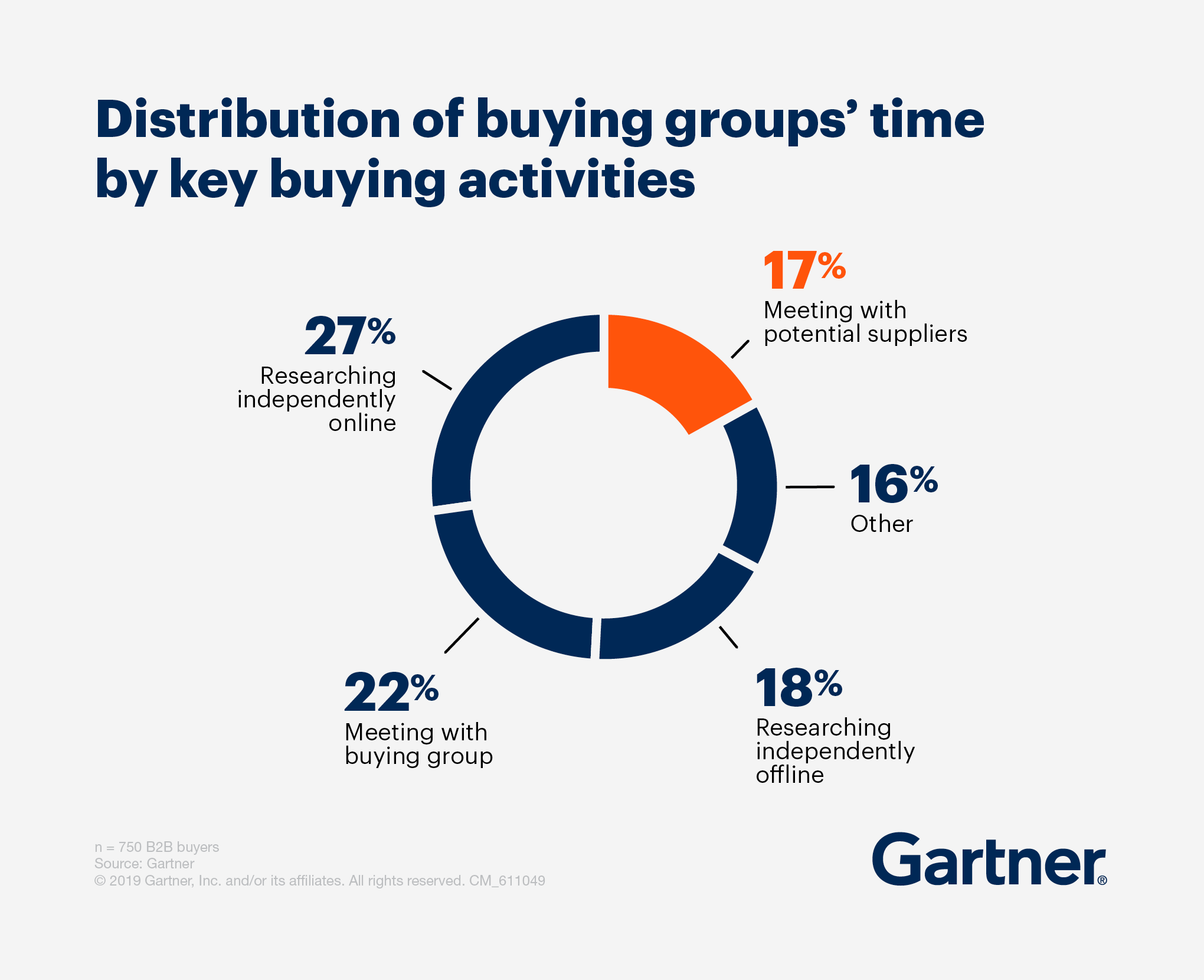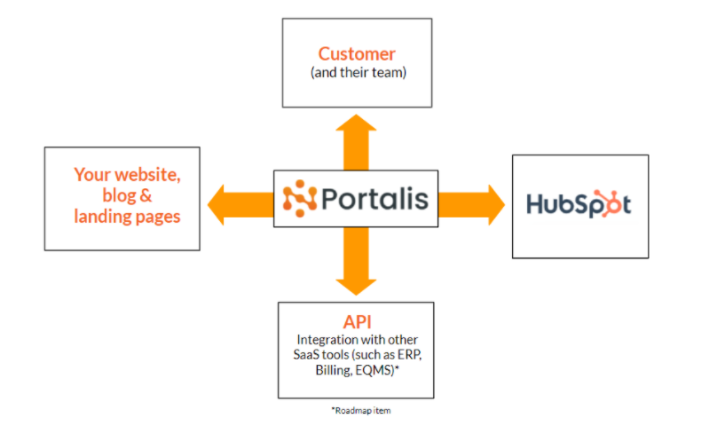Michael Ord is one of the co-founders of Portalis (alongside Andy from Elcap), a sales enablement tool, which was developed from scratch with a bespoke HubSpot API integration by Elcap.
We interviewed Michael to learn where his idea for Portalis was born, and why it's been one of HubSpot's top bespoke integrations since it launched.
How has enterprise sales changed in the past decade?
The world has changed. But the long-standing trend of consumerization of enterprise and B2B sales has rapidly accelerated over the last two or three years.
Consumers are trained to have frictionless onboarding and smooth purchasing experiences.
Tools like Amazon spend millions of dollars on checkout optimisation analysis to try and improve conversion and increase order value.
This has trained users to be savvy and to expect ‘Amazon-like’ experiences across all of their digital- and real-life engagement.
The most successful organisations blend the physical experience with an integrated kind of digital experience alongside that customer journey.
This 'basic need' in the consumer space was lagging somewhat in B2B and enterprise software. The nature of the industry is different - you're dealing with complex, multiple stakeholder decision-making units, typically over long sales cycles. There are typically more gatekeepers to overcome, whether they are financial, functional or technical teams. And so the B2B sales cycle was (and still can be) 150+ days.
As a salesperson, I'd be engaging with various stakeholders at different stages of the buying journey.
In a consumer journey, 70 - 90 % of the power is in the hands of the consumer review sites. Tools like Tripadvisor, blogs and forums give users the ability to do research off-site before making a decision.
In a B2B or enterprise setting, off-site, secondary research accounts for around 50% of the buying influence.

Whereas in the past, getting case studies and real customer experience relied on the vendor sharing it with you. Now, with tools such as G2, Capterra, and Glassdoor the buying power has transformed.
What's happened in the past two years is the trend toward self-serve in B2B. That frictionless consumer experience is being replicated to serve legacy enterprise / B2B buying processes. Companies such as HubSpot have led the charge, but now the 80% majority is rapidly taking up a customer self-serve approach.

The solution: How to accelerate the sales cycle with world-class remote sales and support
People used to think you couldn't deliver a six-figure sale without meeting them in person. It would almost be considered a lack of commitment if you didn't get on a jet to seal the seven-figure deal.
Now all of this has been blown out of the water with COVID.
B2B & enterprise customers want a more dynamic, real-time, asynchronous relationship.
The best organisations are already getting that right. We know that reviews, fast time-to-value, customer success, Net Promoter Score, and customer happiness increase upsell revenue and net new revenue. And because the internet is so transparent, the key superpower is to find good-fit customers, do a fantastic job quickly, and then weaponize the reviews and feedback loop.
In the past as an enterprise software company, you could be shiny and slick on your website, you might take a prospect to a conference or out for a nice meal. But post-purchase order, they would be embroiled in a three-year implementation, where they were handcuffed to this contract and couldn't get out of it. Speed and time-to-value wasn't a consideration.
It's an opportunity that presents some challenges if you're trying to be really successful in this remote selling and remote customer success environment.
70% of enterprise sales aren’t being lost to your competitors.
You are losing them due to loss of momentum in the sales cycle.
How do we remove the fear of project failure, and a lack of visibility of the path to desired outcome?
In most sales processes, we find there is a lot of engagement with a champion who will drive for a decision in the organisation. But they’ll be running against a quagmire of challenges, priorities and motivations.
For example, we might need to wait for the CFO who has 1000 other tasks to deal with and this project will just sit in their to-do list.
What we have found is that operational functions tend to not be very good at doing the internal sell – which is crucial for driving decision making. And in this remote world, it’s even harder to go and catch your CFO in a town hall or a meeting, because you’re trapped behind technologies such as Teams / Zoom.
As sales teams, we need to plan for each of our various stakeholders / personas. If we're talking with an information security persona, we know they aren’t so worried about commercials, but they want to see ISO 27001 certification, data privacy agreements, IT processes etc. Whereas user buyers want to see case studies, datasheets, onboarding / project plans etc.
In a remote world, you can’t get a plane or in a car and get 12 people in a room for a half-day workshop. Businesses don’t want to invest like this and people are adopting hybrid working, so with scarce office-based time it’s hard to synchronise diaries.
You have to adapt your way of communicating to your audience in a respectful way.
Tools such as Portalis, which is a HubSpot integrated Customer Portal (available on the HubSpot marketplace here), are designed to provide relevant personalised content and messages which helps your various stakeholder groups to come to their own decisions at the right time in the sale.
Portalis enables you to empower your coach to leverage the internal sell more effectively.
70% of procurement projects fail because the business isn’t convinced that the process of going from purchase to live is robust.
They are afraid of the project.
They can’t visualise it.
They feel it’s safer to do nothing than to open the Pandora’s box and get embroiled in a project.
Portalis enables you to share interactive access to a unique support portal. You can give direct access to counterparts. They can book in meetings. They get visibility of the project. Proactively share documents, proposals and contracts. Enable users to book meetings when they need it. And it links to project management boards such as Trello. This creates momentum because the fear factor is reduced. People’s concerns are diminished and we are addressing any legitimate concerns, but also making our customers confident they will be looked after.
How does Portalis help customers achieve their desired outcome?
Portalist makes the customer central to the entire process.
You can constantly check:
- Is the customer delighted?
- Are they using the services / product effectively?
Have a North Star metric - whether you're a builder or a SaaS enterprise - and obsess over it for your entire customer journey
Slack is a great example.
Slack’s North Star metric is the number of messages sent in their tool. Once a company sends around 2000 messages in the tool, they were happy the tool was sufficiently embedded in the organisation and the tool was embedded into the culture. A lot of their in-app and product messaging was geared around those first 100 days of use to try and accelerate that volume.
But you don’t have to be building a software tool to have a North Star metric. Lots of companies have a North Star metric now, and it’s really important that you understand one measurement that drives value for the customer. Once you’ve achieved that metric, your customer has achieved their desired outcome – they aren’t going anywhere.
For example, our builders sent a letter to all of our neighbours, giving them their support phone number, certifications, and saying that they wanted to be considerate. This created a moment of delight for our neighbours - and us! It’s fantastic marketing, rooted in obsessive customer centricity, with an absolute focus on the customer's need.
Giving self-serve control and visibility to your customers using tools such as Portalis makes a massive impact in removing the blockers to buying.
What is Portalis?
Portalis is a way of delivering world-class remote sales and customer support, particularly for subscription or B2B organisations. It was founded from my own experience of running a SaaS enterprise software company where we needed to more effectively manage existing customer self-service tickets and to enable engagement with project services.
Portalis helped to stop 55 phone calls a day asking the same question because the information was available in a secure, personalised portal environment.
The biggest value-add was that it could be deployed with tools such as custom-pricing calculators to encourage self-serve access in the sales process. This helped to accelerate the sales cycle as it made information available.
The portal acts as an interactive, secure proposal. It moves your business away from traditional emails with PDF attachments to a secure environment, giving you a unique point of difference for your customers in the buying process.
It really surprised us how well it worked.
The sales cycle time dropped 40% on average.
Conversion rates more than doubled after the first discovery call because people were delighted by the tool.
Suddenly, people were in a secure environment, choosing the colour of the carpets or choosing the metaphorical colour of the wallpaper, rather than comparing us with less sophisticated sales organisations who just sent over a PDF proposal which then got lost in their inbox.
It was a transformational reaction to this need for better customer management in a remote world.
Want to try Portalis for free?
Visit Portalis.io or ask any of the team at Elcap. It's self-service Hubspot API can be set up in just seconds. Let us know how you get on.
Emily
Emily plans and manages the organic, paid and social media marketing for elcap's clients, as well as HubSpot implementations.




